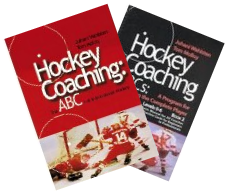Kai, Great work that you put together here. Your stats go with the thread - Statistics in critical area's also.
Your work proves the comments and statistic's that were posted there.
Team Sweden sure took advantage of that 3 sec stat .
The time for it takes for a team to recover (approx) on a turnover.
Team Sweden were a very highly skilled team. But the quick puck movement forward was great to watch.
How can or should we make changes in Minor Hockey in this area ?
Most coaches understand the importance of transition , but don't know how to teach it.
We can yell at players in practice to" move the puck faster it's all about transition" , but how can we teach this so the players understand it ?
There is some great information on this site , but if the coaches don't understand it they won't use it.
I know what Tom and Dean are thinking because they understand how to do this.
Can we teach this to the players or let the Game teach the Game.
The average coach doesn't understand how to put it all together in a yearly plan . So how can we help each other or should we make changes in how we teach as coaches?
RK
RookieCoach
What I saw the Swedish U20 Team do was 'have incredibly good habits' They played on the defensive side with 'body on body and stick on the puck' and when they got possession they prtotected the puck with their body and made the easy play, always having close support. The puck carrier used a lot of cut backs while protecting the puck.
In 2010 the Swedes sent an entire bus load of coaches to the International Coaching Symposium during the IIHF World Championships. The goal was to imporve the coaching in Sweden. The 1-3-1 that Tampa bores everyone with originated in Sweden in the 70's when a coach won with a not very good team. It became the Swedish way to play hockey. So they had all these great players like Forsberg but played a boring passive style. They have changed the way they play from within.
Some things to note are that they play cross ice until the players are 10 years old. This causes 600% more touches (I watch my grandsons full ice games and the stars from each team are always getting breakaways while the rest watch.)
The Swedes teach technique and put the technique into game situations and transition games. I posted a practice from Sweden that I took a video of while my college team warmed up for their game. It is a great example of how to practice.
I watched lots of U20 teams practice during the World juniors earlier in the month and the Swedes had the best flow and most touches.
Something to note that is that in the 2011 IIHF finals last year when the Swedes played Finland the Finnish team won the gold because the Swedes kept regrouping and stressed puck possession instead of attacking quickly. The Finns played more of a north-south game and won. Maybe Sweden learned from this and tried to attack an unorganized defense instead of hanging onto the puck until the other team was ready to defend. That 3 second principle is important because you are attacking 3-3, 2-2, 3-2 etc. instead of 5-5.
http://www.hockeycoachingabcs.com/mediagallery/media.php?s=20080726154046510 Anders teaches a skill then has efficient drills to practice it, moves to small area games and finishes with a transtion game. This is a good model for practices.
Greetings Everyone,Although I am a first-year hockey coach, I have pleayd the game most of my life. This point alone doesn't qualify me to speak to the value of the ADM, but since I just started my 15th year as an elementary school physical education teacher, I can state without question that USA Hockey's ADM is certainly what is best for all of the kids.I am proud & excited to be a member/coach of my local association as we move in a forward direction in helping all kids become better athletes & hockey players.
max






Well this obviously needed thread of it own....
And I'll start with two questions.
1. Why / how did the Sweden U20 team win WJC? Was it tactical or individual superiority? What were the key elements?
2. How will the game develop? tactical evolution of the game? possesion vs. fast transition? etc.
It would be interesting to hear your views.
Here's some of my thoughts on question 1.
As you can see in the image below I made some notes from the WJC Final.
I counted attacks of the team Sweden and I divided attacks by different pace.
And then I tryed to determine how the attacks ended. (it's 5v5 and not the OT)
Attacks from the DZ
- fast = vertical pass and / vertical movement of the puck carrier
- semi-fast = lateral pass and the vertical movement or pass ( D to D to F)
- delay = D stops behind the net
- 3+ = 3 or more passes
Attacks from the NZSo Sweden played mainly fast up in their DZ but they did some regroups at the NZ.
Many of their attacks resulted a long cycle at their OZ. (I normaly list also OZ turn overs).
Sweden had really good stick on stick pressure on defensive
Kai